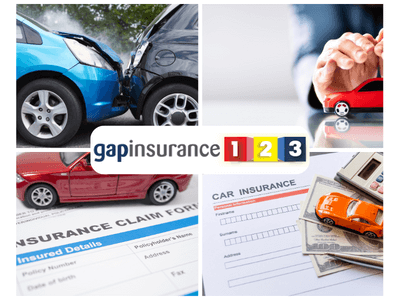Call Monday-Friday 9am - 6pm Closed Saturday & Sunday
Motor Excess Insurance vs GAP Insurance Motor Excess Contribution: What is the difference?
When it comes to safeguarding your vehicle, insurance is not just a legal requirement but also a smart financial decision. The insurance field has developed over the years also, so you have a range of products you can use for your protection.
Motor Excess Insurance and GAP Insurance are two of these, and one question can often arise.
Motor Excess Insurance can cover your excess deduction costs on a motor insurance claim. GAP Insurance can cover a shortfall if your vehicle is written off or stolen. GAP Insurance also provides an excess contribution cost if your motor insurer invokes an excess charge.
So if both Motor Excess Insurance and GAP Insurance can cover excess deductions, then which of the types of insurance do you need? Do you even need both?
This comprehensive guide aims to demystify these two insurance products, highlighting their differences and helping you make an informed decision tailored to your unique circumstances.
Motor Excess Insurance vs GAP Insurance Motor Excess Contribution: What is the difference?
What is Excess on your Car Insurance policy? .png)
Compulsory and Voluntary Excess
What is Motor Excess Insurance?
Why Consider Motor Excess Insurance?
What is GAP Insurance Motor Excess Contribution?
Why buy GAP Insurance with Motor Excess Contribution?
So do you buy Motor Excess Insurance, GAP Insurance or both?
Key Takeaways
- Motor Excess Insurance and GAP Insurance with Motor Excess Contribution are distinct products designed to meet different needs and situations.
- Understanding the nuances between the two can help you make an informed decision whether to buy either, both or neither.
What is Excess on your Car Insurance policy?
The excess on your motor insurance policy is the contribution you make towards a claim on your motor insurance cover when you make a claim. It is, in fact, the first part of any claim cost.
For example, if you have an insurance claim on your motor insurance policy, you have to pay the excess before the repair can be done. So if the repair cost is £3,000 and your excess is £750, then you must first pay the £750 excess to the motor insurer, and they will cover the remaining £2,250.
Compulsory and Voluntary Excess
The excess on your vehicle insurance is normally made up of two types, voluntary and compulsory excess. .png)
A compulsory excess is the amount the motor insurer imposes as the minimum amount you must pay towards any claim.
A voluntary excess is the amount you commit to contribute to any claim on top of the compulsory excess.
You choose to take a voluntary excess with the aim of lowering your overall annual premium. This can be a risk because if you do have a claim, you will have to pay a higher overall excess contribution. This can be protected, however, with a motor excess insurance policy.
What is Motor Excess Insurance?
Motor Excess Insurance is a specialised insurance product that comes into play when you make a claim on your primary motor insurance policy.
This policy covers the 'excess' amount that your primary insurance doesn't cover. The excess is the initial amount you must pay when making a claim.
For example, if your excess is £500 and the repair costs are £2000, your car insurance policy will cover £1500, and the remaining £500 is what you have to pay. If you take out a Motor Excess Insurance policy, then this £500 excess you can claim back.
Why Consider Motor Excess Insurance?
1. Financial Safety Net: It acts as a financial safety net, ensuring you don't have to dip into your savings to cover the excess.
2. Affordable Premiums: Generally, Motor Excess Insurance comes with affordable premiums, making it a cost-effective way to manage risks.
3. Flexibility: This type of insurance offers the flexibility to choose the level of excess you are comfortable with, allowing you to tailor the policy to your needs. Taking a higher excess contribution (both voluntary and compulsory excess combined) should see you save significantly on your annual insurance premium costs.
What is GAP Insurance Motor Excess Contribution?
GAP Insurance (also known as Guaranteed Asset Protection) is a policy designed to cover the financial 'gap' that may exist between the market value of your vehicle and the amount you initially paid or the remaining loan amount.
GAP Insurance only comes into play if your vehicle is written off or stolen and the vehicle is declared a total loss by your motor insurer.
As part of a normal claim, most GAP Insurance policies also offer a feature known as Motor Excess Contribution. This feature can contribute towards the excess you might have to pay when making a claim on your primary motor insurance for the total loss.
Why buy GAP Insurance with Motor Excess Contribution?
1. Comprehensive Protection: It offers a more comprehensive level of protection, covering not just the value of the car but also contributing towards the motor insurer's excess in case of a claim.
2. Investment Safeguard: If you've invested a significant amount in your vehicle, this policy helps safeguard that investment.
3. Peace of Mind: Knowing that you're covered for both the vehicle's value and any excess charges brings a level of peace of mind that is hard to quantify.
The Key Differences
Coverage
- Motor Excess Insurance: This policy is laser-focused on covering the excess amount that you would have to pay when making a claim on your primary motor insurance. This could be any fault claim for damage, theft, or total loss.
- GAP Insurance Motor Excess Contribution: This is specifically only paid if the car is written off or stolen. You cannot claim the excess deduction if the vehicle is repaired and given back to you.
Purpose
- Motor Excess Insurance: The primary purpose is to mitigate the financial burden that comes with paying the excess during a claim.
- GAP Insurance Motor Excess Contribution: The aim is to offer a safety net that covers a financial 'gap' in the event of a total loss and potentially contributes towards the excess deduction.
Flexibility 
- Motor Excess Insurance: One of the key advantages is that it can be purchased independently of your main motor insurance policy, offering you the flexibility to shop around for the best rates.
- GAP Insurance Motor Excess Contribution: This is usually a standard feature with your GAP Insurance policy, which means you have less flexibility in choosing a cover level.
So do you buy Motor Excess Insurance, GAP Insurance or both?
Whilst there is some overlap between Motor Excess Insurance cover and GAP Insurance excess contribution, they mostly cover different situations.
Motor Excess protection can cover excess claims on your vehicle insurance, where your motor insurer charges your excess before processing a repair or replacement. These will be fault or theft claims, where the excess is charged and cannot be claimed back.
The excess protection insurance can be claimed when you make your excess payment.
The excess feature on a GAP Insurance policy only comes into play when your vehicle is stolen or written off. This happens when your comprehensive motor insurance policy makes a market value settlement offer to you and then deducts your excess amount from the settlement.
Some may think that having the excess feature on a GAP Insurance policy means they may also not need an annual car excess insurance policy. However, there are a couple of aspects to consider with that:
-
The excess contribution is only made when the GAP Insurance claim is made. That means the vehicle will need to have been written off.
-
The excess contribution on a GAP Insurance policy tends to be fixed. Your actual motor insurance excess may be higher than that figure. That means even in a total loss situation, the excess provision in the GAP Insurance settlement may still not cover your entire excess amount.
-
As the motor excess insurance policy is annual, it allows you to take a higher voluntary excess amount if it impacts your annual comprehensive motor insurance policy premium. You can then take a higher maximum claim limit on your excess protection insurance policy to cover that.
The choice of whether you take GAP Insurance, Motor Excess Insurance or even both is a choice for you. They do cover different situations, and you certainly would have a very comprehensive level of cover if you had them in tandem.
FAQ
What is an 'excess' in motor insurance?
An 'excess' is the amount you must pay towards a motor insurance claim.
Can I buy Motor Excess Insurance and GAP Insurance from different providers?
You can purchase these policies from different providers, although GAP Insurance with Motor Excess Contribution is often a standard feature.
Is Motor Excess Insurance mandatory?
No, it's an optional coverage but highly recommended if you have a high excess on your primary policy.
Does Motor Excess Insurance coverage also cover car hire excess insurance costs?
Standard private car motor insurance excess protection does not cover car hire excesses. Products do differ, so please check the policy terms and conditions.
Does Motor Excess Insurance work with all types of car insurance?
No, your excess must be charged (and paid by you) before you can claim back your excess costs from a Motor Excess cover product. Therefore you must have a fully comprehensive motor insurance policy in place for that to happen.
Motor excess protection cover does not work with third-party or third-party fire and theft levels of vehicle insurance.
Is Motor Excess Insurance from GAPInsurance123 just for private cars?
No, we can also provide excess protection insurance for motorbikes that have fully comprehensive insurance.
Published 28/8/23, written by Mark Griffiths


